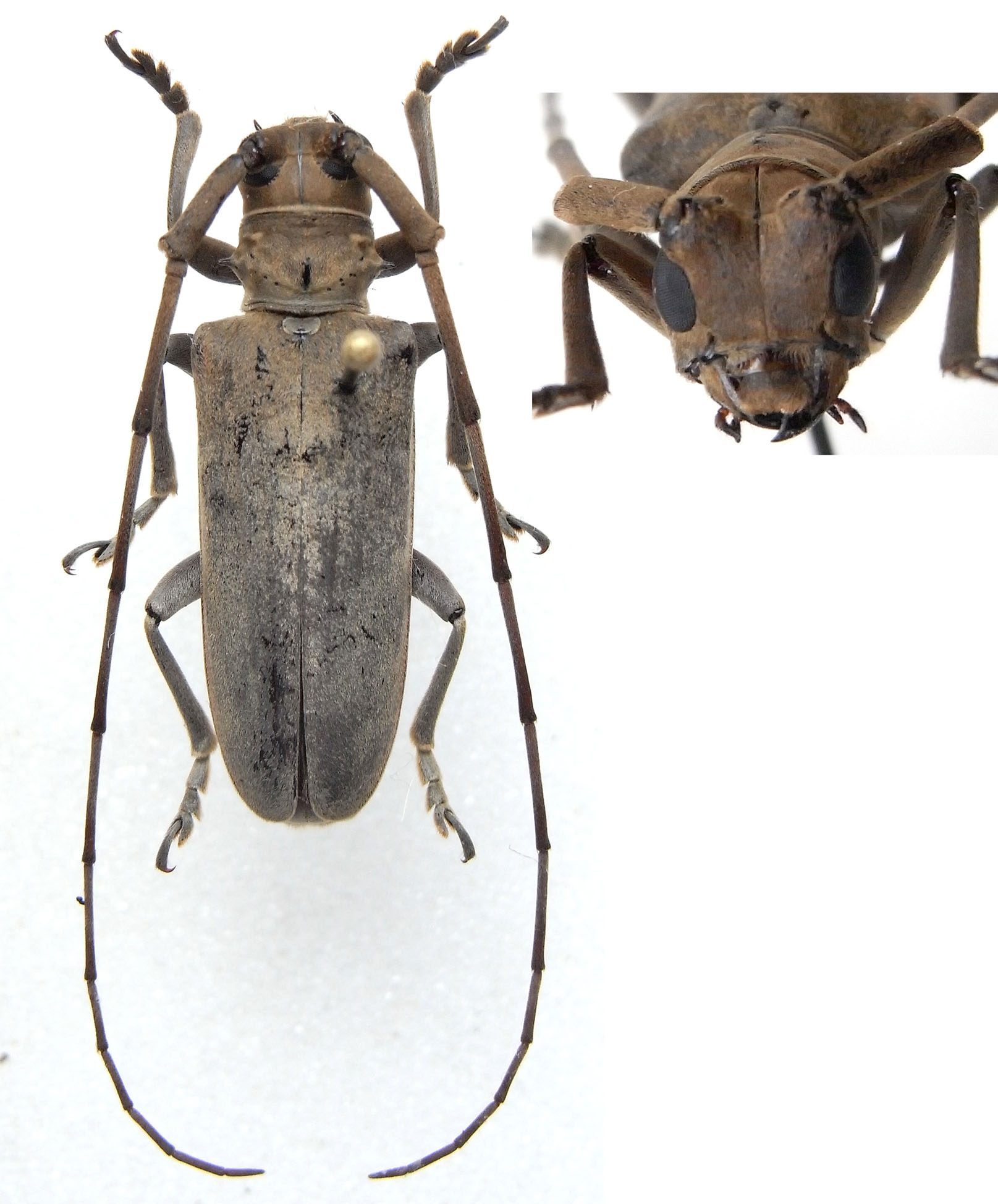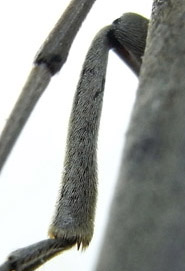| Author |
 Topic Topic  |
|
Xavier
Scientific Collaborator
    
France
12095 Posts |
 Posted - 09/06/2018 : 18:22:47 Posted - 09/06/2018 : 18:22:47



|

285.42 KB
23 mm; Thailande (Phrae Prov.).
Acalolepta sp... Any idea Francesco ? |
Edited by - Xavier on 24/06/2018 13:36:33 |
|
|
jplami
Member Rosalia
  
France
656 Posts |
|
|
Francesco
Forum Admin
    
Luxembourg
9420 Posts |
 Posted - 21/06/2018 : 23:07:47 Posted - 21/06/2018 : 23:07:47




|
Le caractère qui sépare les Haplothrix sont les tibias médianes pas sillonnées. Là on les voit pas...  |
 |
|
|
Xavier
Scientific Collaborator
    
France
12095 Posts |
 Posted - 21/06/2018 : 23:19:22 Posted - 21/06/2018 : 23:19:22



|

135.83 KB
Les cavités coxales antérieures sont fermées, ce n'est donc pas un Haplothrix comme ici. |
Edited by - Xavier on 22/06/2018 07:51:08 |
 |
|
|
Xavier
Scientific Collaborator
    
France
12095 Posts |
 Posted - 22/06/2018 : 07:24:33 Posted - 22/06/2018 : 07:24:33



|
Les tibias ne sont pas sillonnés, ou très légèrement :

32.23 KB |
Edited by - Xavier on 23/06/2018 10:50:21 |
 |
|
|
jplami
Member Rosalia
  
France
656 Posts |
|
|
Xavier
Scientific Collaborator
    
France
12095 Posts |
 Posted - 22/06/2018 : 22:20:32 Posted - 22/06/2018 : 22:20:32



|
Oui, ce n'est donc pas une Acalolepta; ni une Haplothrix.
Mais la définition du genre dans la révision de Breuning (1938) ne colle pas avec celle de Gahan ! :

42.25 KB |
Edited by - Xavier on 23/06/2018 10:47:06 |
 |
|
|
jplami
Member Rosalia
  
France
656 Posts |
|
|
jplami
Member Rosalia
  
France
656 Posts |
 Posted - 23/06/2018 : 20:26:32 Posted - 23/06/2018 : 20:26:32




|
J'ai récolté 2 femelles à Wang Chin que j'avais déterminé Haplothrix et qui ressemblent au spécimen à déterminer.
Les ongles sont divariqués presque divergents. Quand je compare à mes exemplaires de Haplothrix blairi, les ongles correspondent.
Les cavités coxales antérieures sont beaucoup moins ouvertes que H blairi, elles semblent presque fermées avec une petite fissure/ouverture. |
Lamiaires du Monde • Lamiines of the World • Cerambycidae Lamiinae |
 |
|
|
jplami
Member Rosalia
  
France
656 Posts |
|
|
Xavier
Scientific Collaborator
    
France
12095 Posts |
 Posted - 23/06/2018 : 23:58:32 Posted - 23/06/2018 : 23:58:32



|
| Étrange puisque la femelle ici a bien les cavités antérieures ouvertes. Gahan a même défini le genre avec ce caractère : "the anterior coxal cavities distinctly open behind". |
Edited by - Xavier on 24/06/2018 09:14:23 |
 |
|
|
jplami
Member Rosalia
  
France
656 Posts |
 Posted - 24/06/2018 : 09:20:20 Posted - 24/06/2018 : 09:20:20




|
Tu veux dire "fermées"... sinon ce serait une femelle de Haplothrix simplex.
Ta femelle a-t-elle le dernier segment abdominal avec une "grande dépression ronde très profonde" (formulation de Breuning,1944:365) comme celle de ton autre post ? |
Lamiaires du Monde • Lamiines of the World • Cerambycidae Lamiinae |
Edited by - jplami on 24/06/2018 09:36:02 |
 |
|
|
Xavier
Scientific Collaborator
    
France
12095 Posts |
 Posted - 24/06/2018 : 09:46:08 Posted - 24/06/2018 : 09:46:08



|
Je ne comprends pas. Le spécimen de ce post a les cavités antérieures fermées, tandis que le couple de H. simplex ici a les cavités antérieures distinctement ouvertes, comme l'a défini Gahan.

99.74 KB |
Edited by - Xavier on 24/06/2018 10:04:45 |
 |
|
|
Xavier
Scientific Collaborator
    
France
12095 Posts |
 Posted - 24/06/2018 : 10:22:02 Posted - 24/06/2018 : 10:22:02



|

154.49 KB
J'ai regroupé ici plusieurs espèces de ce que je pense être des Haplotrix : tibias médians non sillonnés et cavités coxales antérieures distinctement ouvertes postérieurement. |
Edited by - Xavier on 24/06/2018 10:25:26 |
 |
|
|
jplami
Member Rosalia
  
France
656 Posts |
 Posted - 24/06/2018 : 11:33:14 Posted - 24/06/2018 : 11:33:14




|
Le "presque fermées" dans la clé de Breuning est intriguant mais ta photo montre des cavités coxales sans la moindre ouverture ni fissure apparente.
Donc au vu de toutes ces photos et dans la limite des définitions actuelles des taxa, ton spécimen au fasciès de Haplothrix simplex appartiendrait à un nouveau genre. |
Lamiaires du Monde • Lamiines of the World • Cerambycidae Lamiinae |
 |
|
|
Xavier
Scientific Collaborator
    
France
12095 Posts |
 Posted - 24/06/2018 : 13:35:52 Posted - 24/06/2018 : 13:35:52



|
Ce spécimen a les cavités coxales antérieures "presque fermées" postérieurement, et c'est en partie masqué par la pilosité à cet endroit. Ne trouvant aucune autre différence avec mes Haplothrix simplex Gahan, 1888 en collection, je la range avec mes spécimens femelles de l'espèce.
Ce post donne donc raison à Breuning, et à toi Jean-Philippe  . . |
Edited by - Xavier on 24/06/2018 13:37:26 |
 |
|
 Topic Topic  |
|


